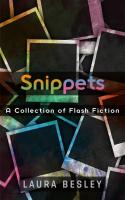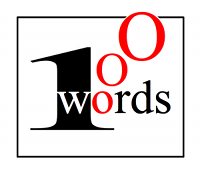.
Drawing on the Past
Ray’s talked about his recollections of Mark and Billy over the last three weeks, and now he wants to tell you about his own experiences from the same time.
When Ray moved to London in 1956 he could hardly believe his luck. He was 17, he’d secured a place at St Martin’s School of Art to study sculpture when the college was on the rise, and he felt liked he’d arrived from the provinces just in time to see things finally wake up after the war.
Even though he and his best mate had only applied for a laugh, Ray took to London life immediately, and flourished both socially and creatively. He made a lot of friends within and without the school, and he quickly found himself singled out because of his instinctive ability. Just a year after arriving his work was exhibited alongside one of the pre-eminent sculptors of the time, and he was feted by his lithography tutor for his exceptional talent. Word soon spread, and some very important teacher-artists used to come to the studio to see his work.
Elsewhere, he was enthralled by the American painters who were being exhibited in Europe for the first time, and he embraced the ground-breaking shifts that were taking under his sculpture tutor.
Moreover, at a time when British artists such as Francis Bacon, John Craxton and Keith Vaughan were exploring their emotions and desires in frank and challenging ways, and when many of his fellow students were becoming increasingly flamboyant, Ray believed he was at a place where he could live openly and honestly.
He couldn’t have been more mistaken. At the end of his third year an increasingly overconfident Ray told one sculpture teacher he was gay, an admission he naively considered innocuous given the apparent liberalism elsewhere in the school. Instead of keeping his counsel, however, the teacher immediately passed this confidence to his head of department, who in turn shared it with the principal. As Ray’s guardian he was justifiably fearful of the legal ramifications of this confession, but his handling, though initially well-intentioned, was to have a lasting effect on Ray.
Ray immediately questioned their response, but was told that “because it came from your own lips, we have to take action”. The principal sent Ray to see the most eminent psychiatrist in London in the hope that he would take – or at least feign – a cure, instructing him that when asked, he was to say that he initiated the consultation himself.
.
He did nothing of the kind, and he made it quite clear to both the doctor and the dozen-or-so medical students sitting in on the appointment that this pantomime was not his decision, that he was perfectly happy as he was, and that he wouldn’t be returning. While this decision may appear either brave or foolhardy, Ray was also driven by fear. In the absence of any sympathetic guidance and amid a mess of half-truths and rumours, he assumed that he would be admitted for electric shock treatment, aversion therapy or chemical castration. Worst of all, he was scared that he’d be forced to leave his partner, who you read about last week; this, more than anything else, was out of the question.
When he returned to the school “all hell broke loose”. He was greeted with a tirade from a frustrated principal who made it clear that Ray had no future there, and his stand led to the collapse of his relationship with the more pragmatic sculpture department. The invective he received from one staff member in particular was so persistently debilitating that his some of his fellow students complained about his behaviour.
Furthermore, Ray’s house-mate was summoned to the principal and grilled on every aspect of his domestic life in an attempt to uncover any indiscretion which would have been grist to his mill, given that Ray – though outspoken and intransigent – had been seen to have done nothing up until then that was either illegal or in contravention of college rules. The already-vulnerable Alan then attempted to take his own life. He left college shortly afterwards, and never painted again.
Despite – or even because – of this uncertainty, however, Ray’s printmaking continued to mature at a considerable rate, and his increasingly sympathetic but clearly hamstrung lithography tutor made it known that he had developed talents well beyond his years.
This was all academic, however, because Ray was failed, as he knew he would be. Many of his peers were nonplussed by this decision and they recommended that he appeal or resit, but he knew that either was untenable while the status quo remained. He did approach a solicitor, however, but after sharing his story and his tears he was curtly presented with a bill for five pounds and told that he should “accept his punishment”.
After completing a series of corporate commissions he’d secured in his final year Ray retired as a professional artist and tried to forget everything. He never told anyone else what happened, including his partner, with whom he remained until his death 29 years later. His surviving family will only find out when they read this. He avoided living one lie, perhaps, only to live out another.
.
.
The good news, for Ray at least, is that this isn’t the end of the story, because he returned to art full-time over fifty years later at the age of 72. He’s very quickly had an unexpected, though modest success as a painter, and his work has been exhibited throughout the UK. He’s been away for too long to even know what the vanguard looks like any more, but his unashamedly conservative yet intuitive works have won a small, but enthusiastic set of admirers.
Does he regret all of this? For himself, no; if anything, he thinks it was the making of him professionally, because at the time he believed that nothing worse could happen. He’s sure that in the decade that followed this lent him a toughness that enriched the next stage of his life, even if he took a different turn to the colleagues who went on to make St Martin’s the centre of the art world for a while. He didn’t even think then about what he might have been missing.
It’s fair to say, therefore, that Ray isn’t speaking out now because he feels aggrieved, or because he wishes to point the fingers at the usually-capable professionals who were themselves the victims of history. He can even see why some people would think he didn’t do a great deal to help himself. He’s speaking out because he was one of the lucky ones, and because he wants to put it behind him. He found a way to survive and exploit his creative energies elsewhere, but some people lost more than just their careers and their dreams as a result of the peculiarities of the age; they lost their lives as well, and this article is for them.
POSTSCRIPT:
At the beginning of this year Ray returned to St Martin’s (now Central Saint Martins) to share this story with them. He wanted to find out if there was any record of what happened, and whether this happened to anyone else. If it did, he wants their testimony to be shared with today’s students so that they could see how recently discrimination of this kind was still commonplace, even at an institution many assumed would have been a beacon of tolerance; if this was systemic, this would be an important part of their history.
He returned with the testimonies of those surviving house-mates who were interrogated and a wealth of documentary evidence confirming his presence at the school, but sadly there is no trace of him ever having been there at all. He is still in discussion with Central Saint Martins.
Biography:
Ray Bentley is an award-winning painter from Stoke-on-Trent whose still lifes and figurative paintings have been exhibited throughout the UK. He now lives and works near Redcar with his partner and dog, where he spends his days eating biscuits, napping, not doing the housework, tweeting about his favourite things, reading thrillers and – occasionally – painting. You can learn more about him at www.raymondbentley.com or follow him via https://twitter.com/bentleyteesside
If you missed Ray’s first FreeSpace (Drawing Mark from Memory) you can find it here.
And Ray’s second FreeSpace (Trumpets: Drawing Billy From Memory) can be found here.
nb. Ray, happily, is also one of our Viking artists taking part in ArtiPeeps’ 2014/2015 largescale collaboration The Nine Realms
FreeSpace is a creative opportunity that offers 3 posts on ArtiPeeps to an individual or group for showcasing or a project. The slots can be taken in a cluster or spread over a period of months. Do get in touch via the contact form on the What’s On page or via comments if you’d like to take up this opportunity.
























































